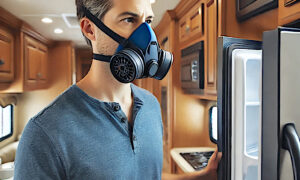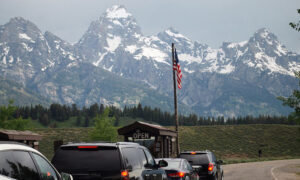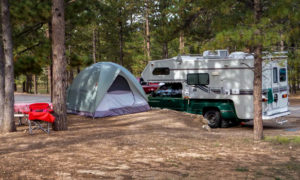
“Our Existence on this planet depends upon the existence of all life around us, and that includes snakes.” — Okefenokee Joe
Snakes FEED on insects, rats, mice and other rodents and reptiles, and snakes are FOOD for raptors, coyotes, bobcats, foxes and other wild animals. The United States is home to four poisonous types of snake families… Coral Snakes (3 species), Copperhead Snakes (at least 5 species), Cottonmouth, (Water Moccasin, 3 known species) and, of course, Rattlesnakes (31 species).
That sounds like a lot of bad snakes, but MOST snakes are not dangerous. In fact snakes are afraid of humans and given space when startled by a human will slither off.
When boondocking with your RV be aware of the area around you. Avoid parking and setting up camp by piles of shrubs, dead branches and refuse or other places snakes might find shelter or food. On cool days snakes like to warm their bodies in sunshine. On hot days they seek to cool themselves in shady spots. Be alert to these.
When hiking in desert lands or other habitat appealing to snakes one should definitely stay alert. If a snake is sited, stop and do not approach it. Make no sudden movements. Don’t try to catch it, kill it or tease it, and if you recognize it as a venomous one give it space.
Most snakebites occur below the knee. Wear appropriate clothing when in snake territory. Get a field guide book so you can identify poisonous from non-poisonous snakes and their habits and habitats.
What to do about a snakebite:
• Make positive identification of the snake, if possible.
• If you are certain it is not a venomous snake, get away from the snake, clean the area and the bite and watch for signs of infection.
• Venomous snakebites can be very serious. Get away from the snake to avoid a second bite. Immediate medical aid is needed for a poisonous snakebite.
• Remain still and as calm as possible.
• Identify the type of snake if you can and call 911.
• Remove constricting items (clothing, jewelry) from the affected limb or area as it will quickly begin swelling.
• Wash the bite area with soap and water. To reduce danger of the venom flowing to the heart, keep the limb or bite area below heart level.
• If 911 is not reachable, get to a medical facility as soon as possible.
• DO NOT eat or drink anything, including medication or alcoholic beverages. DO NOT put ice on the bite area. DO NOT apply a tourniquet or cut over the bite area and DO NOT ever, under any circumstances, try to suck the venom out by mouth.
While most snakes are NOT dangerous most humans fearful that they ARE. Coexistence is possible. Try to develop a respect for them and their contribution to nature’s balance.






